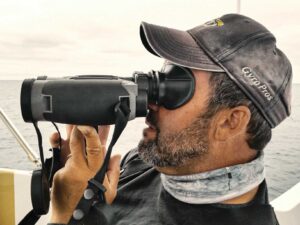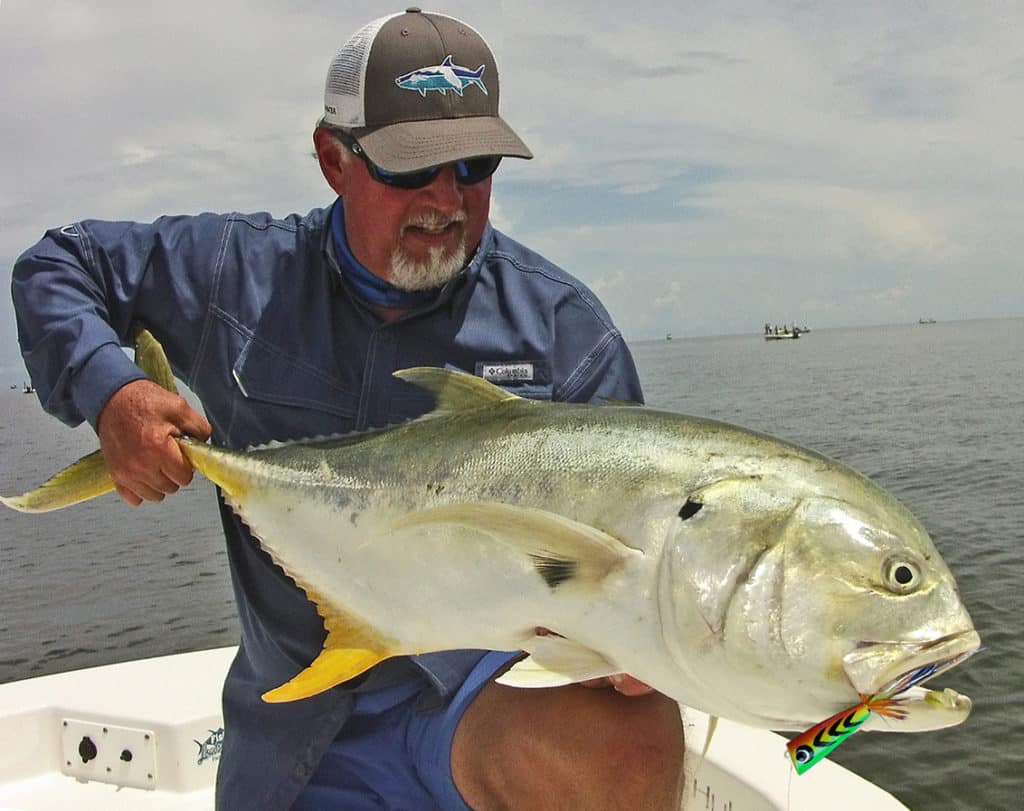
You’ve heard the old adage, and maybe you subscribe to it: “I would rather catch one on a topwater than 10 on a jig.” Dyed-in-the-wool plug-casters mean it, and many fly fishers concur because nothing beats the excitement of watching the water explode under your topwater fly. And there are some classic patterns that stand out. Some pop loudly. Others chug seductively. Others gurgle and dive. Still others push a distinct, enticing wake.
The following is my “Top 10 list,” in no particular order, comprised of topwater flies such as poppers, divers, and suspending “wakers” that I fish in a variety of waters from the backcountry to the surf.
You can tie these in countless colors, and with an array of materials. But I will stress that no topwater fly is fishable if you can’t cast it comfortably. As is paramount with any fly, you must cast a rod and line heavy enough to carry it to the target. I rarely fish anything lighter than an 8-weight with the following flies, and a 9- and 10- are most useful to not only cast these for distance, but to take the fight to some of the bruisers that love to smack flies on top—snook, tarpon, jack crevalle, cobia, bluefish, stripers—just to name a few.
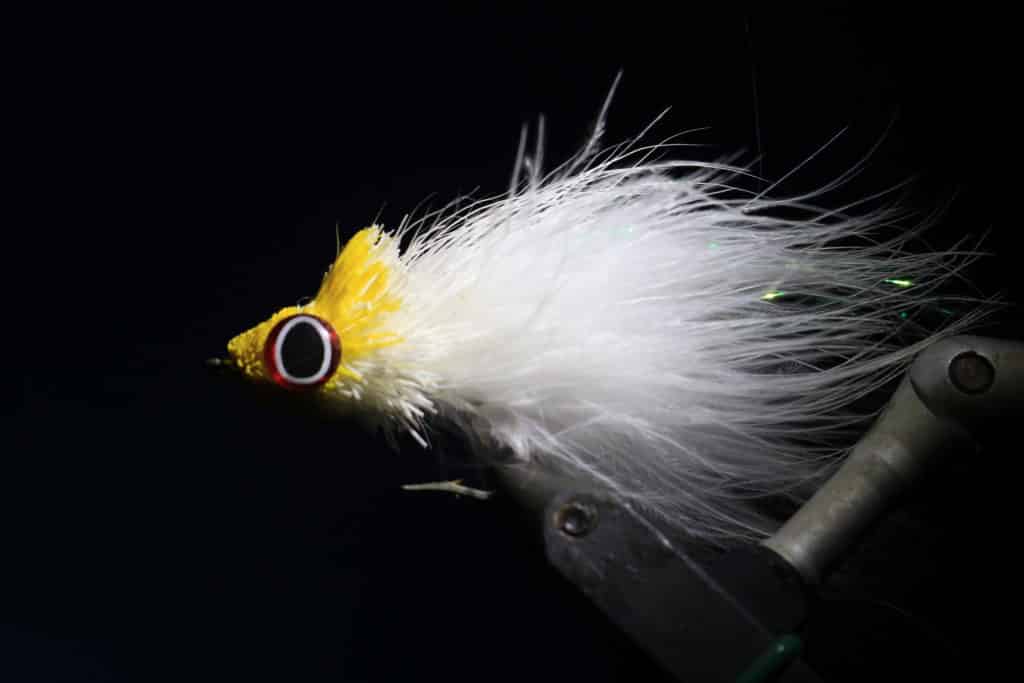
Dahlberg Diver
Angler and I.G.F.A. Hall of Famer Larry Dahlberg developed this deer hair pattern in the ’70s. It’s a great “bass bug” that has fooled hundreds of gamefish, fresh and saltwater. It is a style tying in which the deer belly hair head is clipped to form a distinct ridge of lip on the top to force the streamer under when you strip. It can pop loudly on a hard strip, allowed to re-surface to be popped again. Or, you can pop it and then swim it for short distances too before allowing it to resurface. This action is deadly, and what makes the Dahlberg perhaps my favorite topwater fly of all. Deer belly hair, elk or caribou can be used for the head. Tail materials include marabou, deer hair, hackles or synthetic fibers.
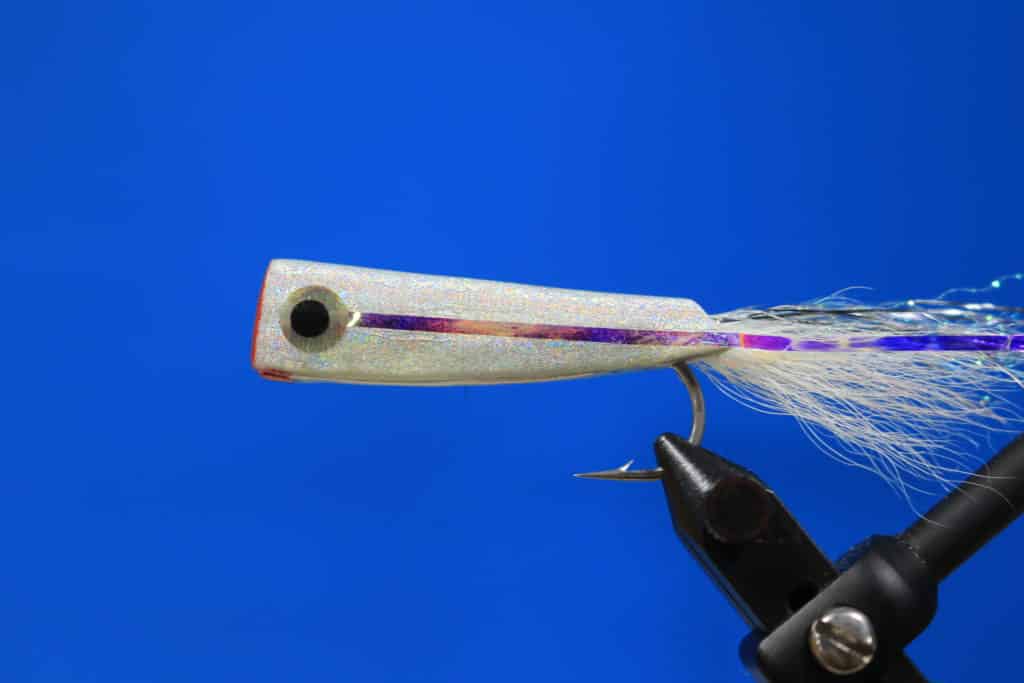
Crease Fly
Capt. Joe Blados of Greenport, New York created this topwater fly to imitate small bunker for striped bass and bluefish, but it takes many species, including snook, spotted seatrout and big Spanish macks for me in Florida. It is not a loud popper, but can be popped. It pushes a great wake and can gurgle at the surface when retrieved with erratic strips. Can fish subsurface nicely if you make long draws on the line against the current. Some say it’s more lure than fly due to its I find that a long, stiff tail allows it to “plane” better in the air while casting. Body can be made with Sticky Foam or Crystal Skin.
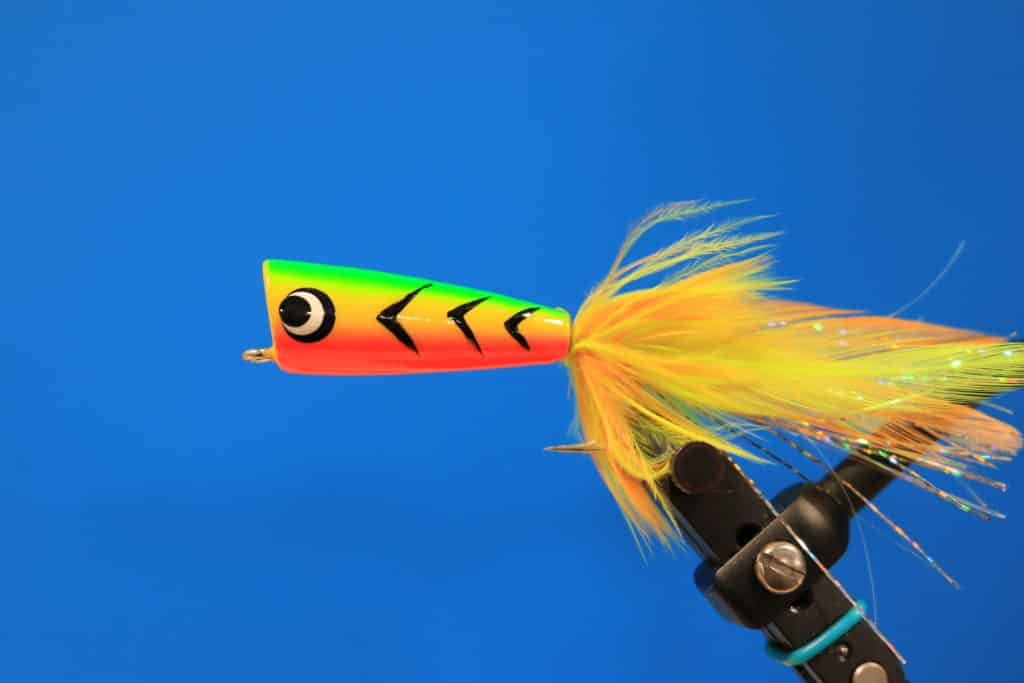
Skipper Popper
This popper actually has a flat rather than cupped face. I like the fact that it is “splashier” on the retrieve, and does not pop too loudly. When I retrieve it aggressively, it even skips off the surface a bit, like a frantic baitfish. It is also easier to pick up to recast than a popper with a deeply cupped face. Tail materials are a matter of choice, but I like stiff bucktail about twice as long as the head, with a little flash mixed in. Head can be hard cork or closed-cell foam.
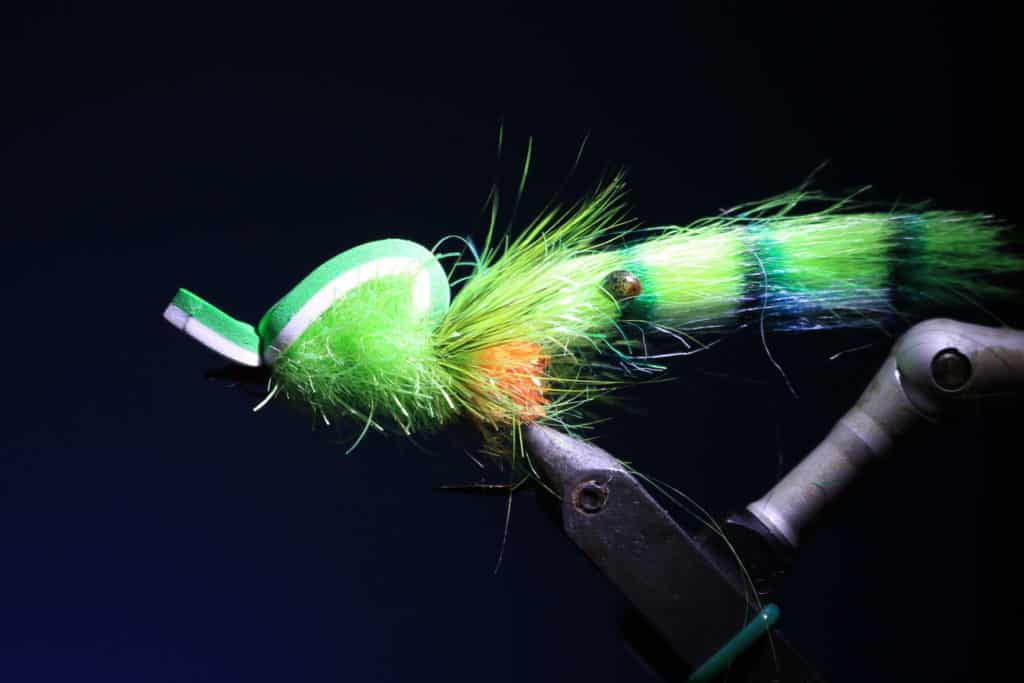
Gurgler
By far the best popper for flat surfaces, and somewhat wary fish. Developed by the late Jack Gartside, the Gartside Gurgler is unique because it employs a long foam strip rather than a foam head to “do its talking.” The front of the strip, tied down along the hook shank over body materials in front of the tail, has a propped-up lip that makes the fly gurgle as advertised. It is not a loud popper, but the gurgling and the wake it creates id the deal-sealer. It is by far my favorite flats topwater fly. It is deadly on tarpon, snook, seatrout, and may be the best redfish popper going, even in the shallowest of water.
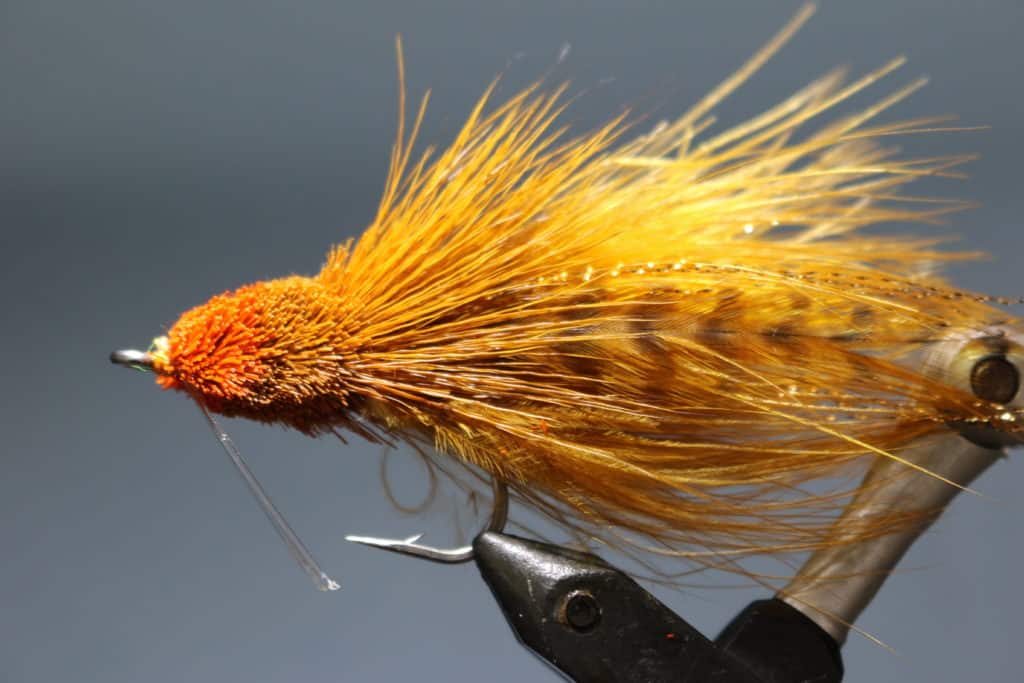
Marabou Muddler
This classic “bug” has a stream trout and bass fishing history. The Marabou Muddler Minnow made its way to the salt about the time I got into saltwater fly fishing in the late 1970s. I saw a few on a fly shop wall and then created my own versions for the flats of Florida Bay, where baby tarpon, snook, seatrout and redfish wholeheartedly approved of it. This fly does stay on top, pushing a good wake, and then sinks just a bit once it absorbs water. After picking the fly out of the water, a back cast or two shakes out the water, and it can be fished at the surface once again. On occasion, I dressed this fly’s head with floatant before fishing when I wanted it on the surface for longer periods. It has taken hundreds of baby tarpon for me, as well as plenty of Everglades backcountry Grand Slams—tarpon, snook, redfish, trout—on the flats of Florida Bay.
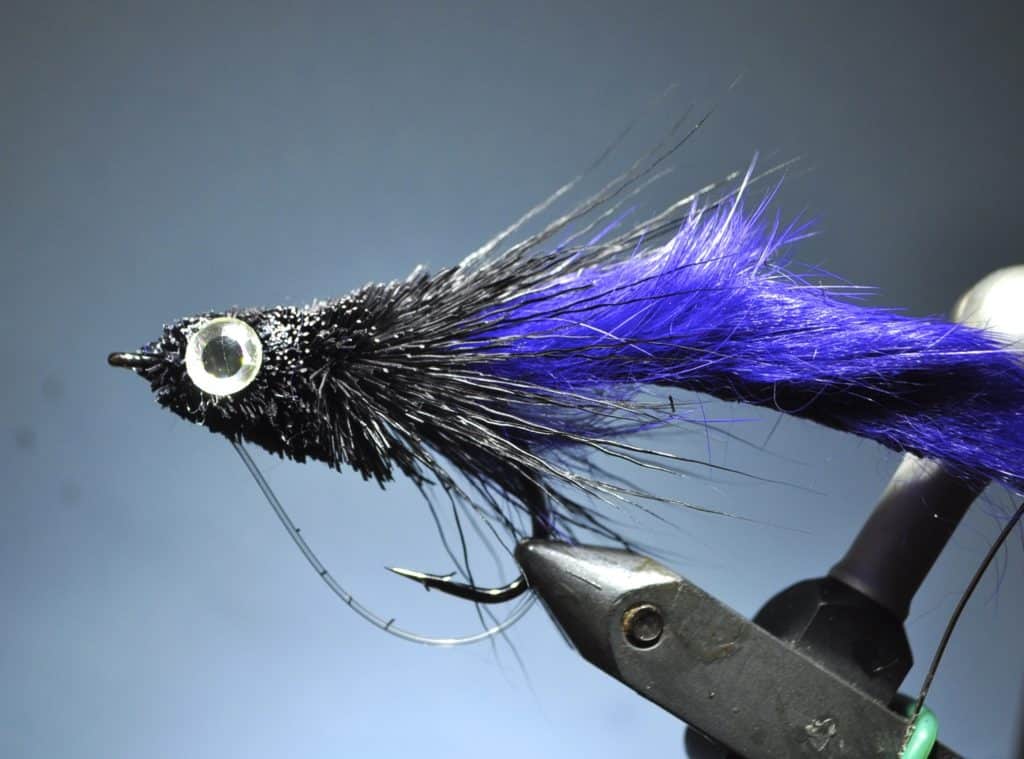
Zonker Diver
Among the most seductive of the topwater patterns I fish, the zonker (rabbit fur) tail undulates wildly when you pull the thing under the surface. The deer hair head can be shaped conically for strictly diving, or left somewhat flat in front for a bit of turbulence on top. The bigger the head, the longer it floats, but I like this one for making a wake at most. Lately, I’ve switched out the zonker strip for a strip of extra select craft fur which has proven more durable and easier to dry out on backcasts for better casting in general.
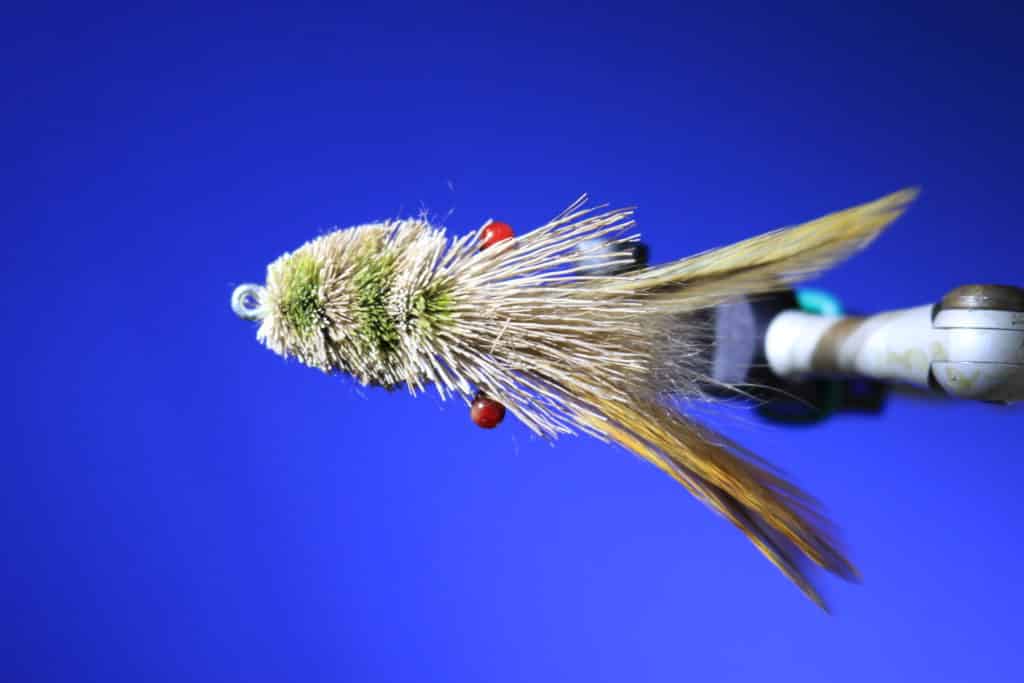
Floating Crab
Floating deer hair crabs have been used for quite some time in the Florida Keys by permit guides targeting permit that come to the surface in channels where sargassum and floating turtle grass blades harbor delectable blue crabs. A splayed tail of multiple curved hackle feathers imitate the crab’s claws, lending appreciable motion and a convincing silhouette. The body is densely packed and clipped deer belly hair, but elk can be substituted. Some fly fishers have gone to foam bodies as of late, but this is the original. Adding a weed guard is a good idea since you might be casting to permit in small openings in floating mats of weed.
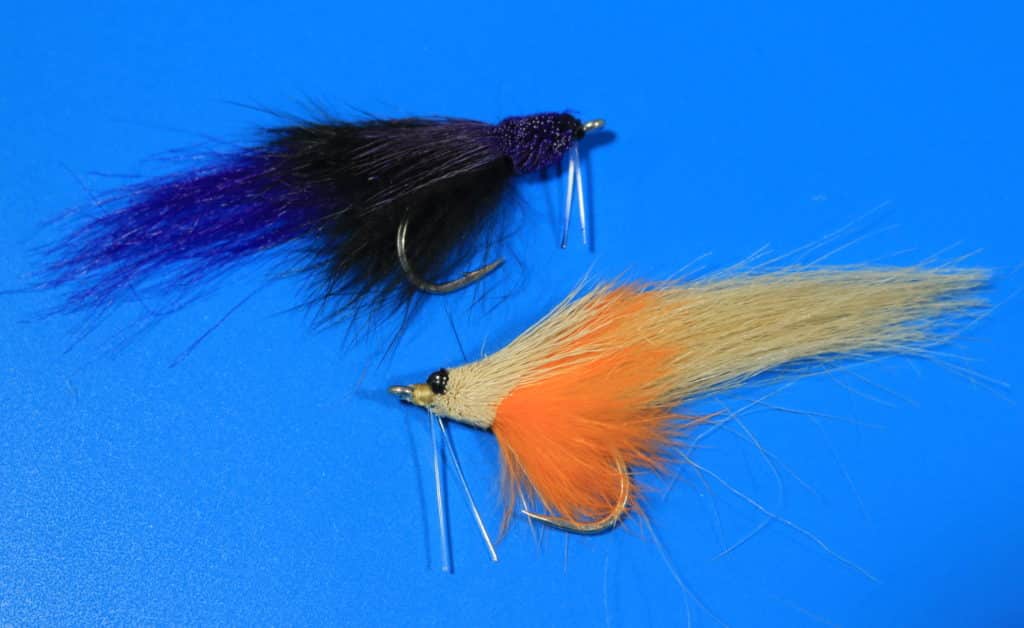
Megalopsicle
It is reported that Umpqua’s Fly Specialist Dave Student came up with this pattern for tarpon, and it is obviously a variation of the famed Tarpon Toad, which swims subsurface. This one utilizes spun and clipped deer hair with perhaps a light bead chain eye. I tie these with bead chain or mono black eyes to keep it waking right at the surface. It’s in the class of a Marabou Muddler for creating wakes that attract fish in the shallowest of water. Colors run the gamut, but dark flies work well for me in tannic or muddy waters, and I have taken big bridge on snook with this pattern in all-white. I fish it against the tidal flow with a floating line and it wakes across the surface.
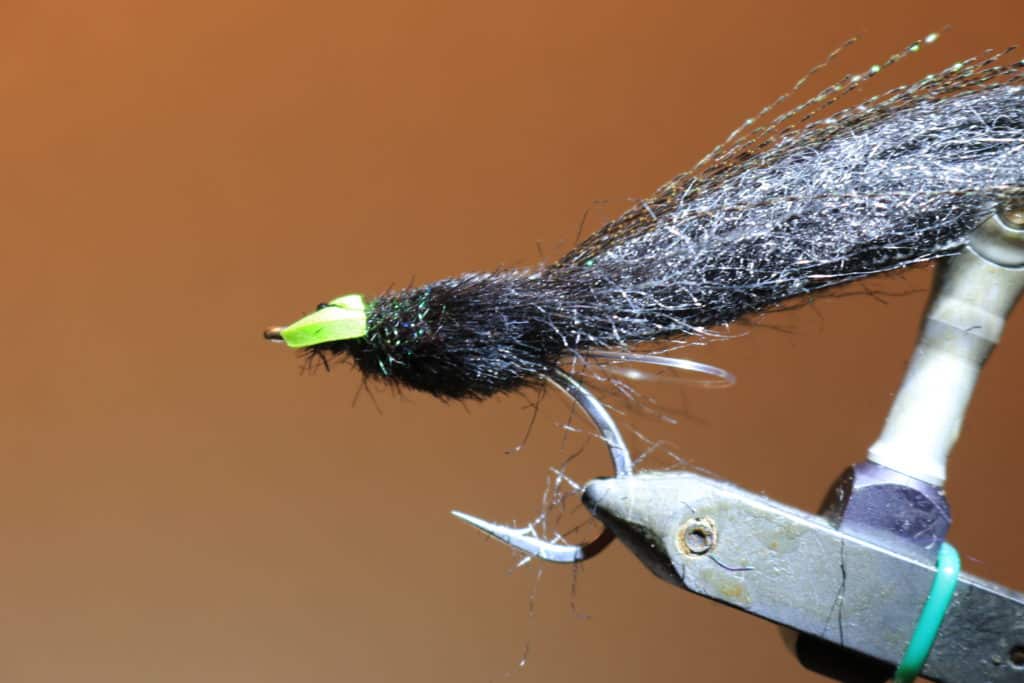
Foam-Tipped Toad
Here’s an ingenious way to make a Tarpon Toad a better surface fly. You tie the fly as usual, with a marabou tail and a series of fiber bunches tied along the hook shank in horizontal fashion. But rather than filling the shank to the hook eye, leave space enough for one or two narrow strips of foam at the very front. It’s akin to strapping a life jacket to your streamer. It does stay at the surface a bit better, as I have discovered. I like to tie in a chartreuse or white foam strip to mine and I can spot the fly better in the water.
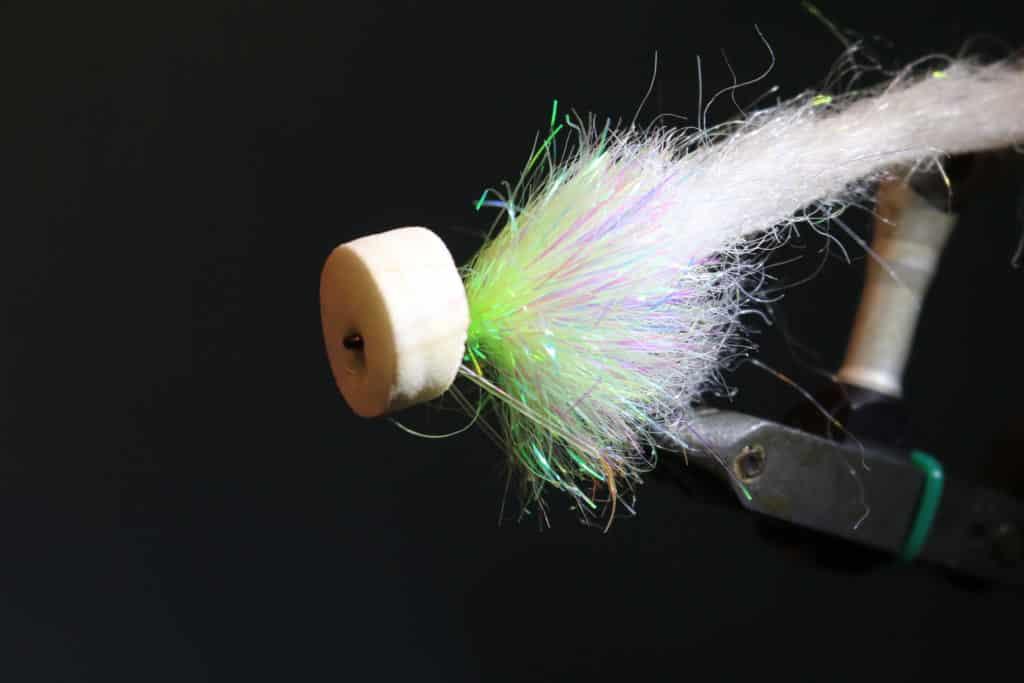
Insta-Popper
This is one you may not be aware of, for good reason. It’s not really a specific fly pattern. It’s a trick I learned from Capt. Brian Esposito, who guides in South Florida (Everglades), and also in Louisiana for giant redfish. We were fishing in the midst of lots of 20- to 30-plus-pound reds and hooking plenty, but at one point, Brian said let’s make it more fun with poppers. I didn’t have a popper in my box, but Brian turned my bushy 3/0 fur strip streamer into a popper instantly with a thick, circular foam disc slightly larger than a dime. We snipped off my streamer, he threaded my leader through a hole in the foam and slid it down over the bead chain eyes, exposing the hook eye. It turned the next big red inside out! Popped like a charm if I kept it moving steadily, and prevented it from sinking as quickly between strips. Try this trick next time you need a popper!


